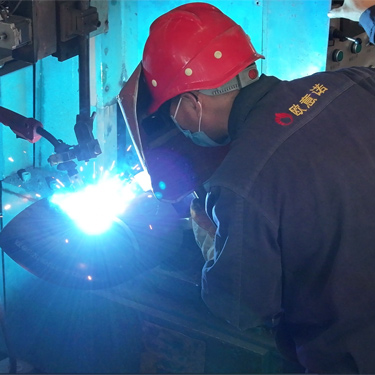
Dec . 05, 2024 15:20
Back to list
shut-off valve
Understanding Shut-Off Valves Essential Components in Fluid Control
A shut-off valve is a critical component used in various industrial applications, plumbing systems, and HVAC installations. The primary purpose of a shut-off valve is to halt the flow of liquid or gas in a pipeline. This capability makes shut-off valves indispensable for system management, maintenance, and safety.
Shut-off valves come in various types, each designed to cater to specific operational requirements. The most common types include gate valves, ball valves, globe valves, and butterfly valves. Each type offers unique advantages depending on the application, such as the need for rapid closure, minimal flow resistance, or a compact design.
Gate Valves are widely used in systems where a straight-line flow of fluid is required. They operate by lifting a gate out of the path of the fluid. One of their key benefits is the low-pressure drop they maintain during operation, making them ideal for applications involving high flow rates. However, gate valves are not suitable for throttling; their primary function is to either fully open or fully close the flow.
Ball Valves are designed for quick shut-off applications and are recognized for their durability and efficiency. Featuring a spherical disc known as a ball that rotates within the valve body, ball valves can provide a tight seal, significantly reducing leakage. Because of this design, they can be operated quickly, making them preferred choices in emergency shut-off situations.
Globe Valves, on the other hand, are often used for throttling flow in pipelines. Their unique design allows for more controlled flow regulation due to their internal structure, which creates a change in the flow condition. Although globe valves can manage pressure drops more effectively than gate valves, they are generally less efficient for full-on or full-off applications.
shut-off valve

Butterfly Valves are another type of shut-off valve that offers space-saving advantages and is ideal for projects where weight and space constraints are considerations. Their mechanism features a rotating disc that opens and closes the flow path. While providing a tight seal, butterfly valves are versatile and commonly used in large-scale systems, such as water treatment plants and HVAC applications.
Beyond their mechanical design differences, shut-off valves play a substantial role in system safety and reliability
. These valves are vital in emergency situations where the swift termination of flow can minimize damage or hazardous situations. For instance, in gas pipelines, the proper functioning of shut-off valves can prevent explosions by shutting down the flow of combustible materials.Installation and maintenance of shut-off valves demand careful consideration. Selecting the right type of valve for a specific application involves analyzing factors like pressure ratings, temperature ranges, medium types, and flow characteristics. Regular maintenance practices, such as inspections and replacements, ensure that valves operate effectively and do not fail during critical moments.
Another significant aspect of shut-off valves is compliance with applicable standards and regulations. For instance, many regions have stringent codes that govern the installation and operation of valves in hazardous environments. Ensuring that valves meet these codes not only enhances safety but also prolongs the life of the entire system.
In conclusion, shut-off valves are pivotal devices that serve crucial roles in various fluid control applications across many industries. Their functionality, combined with the variety of designs available, makes them essential in managing flow, preventing disasters, and ensuring efficient operation in both residential and industrial settings. Understanding the types and purposes of shut-off valves aids in making informed decisions for their use, installation, and maintenance, ultimately fostering safer and more efficient working environments.
Latest news
-
Safety Valve Spring-Loaded Design Overpressure ProtectionNewsJul.25,2025
-
Precision Voltage Regulator AC5 Accuracy Grade PerformanceNewsJul.25,2025
-
Natural Gas Pressure Regulating Skid Industrial Pipeline ApplicationsNewsJul.25,2025
-
Natural Gas Filter Stainless Steel Mesh Element DesignNewsJul.25,2025
-
Gas Pressure Regulator Valve Direct-Acting Spring-Loaded DesignNewsJul.25,2025
-
Decompression Equipment Multi-Stage Heat Exchange System DesignNewsJul.25,2025

